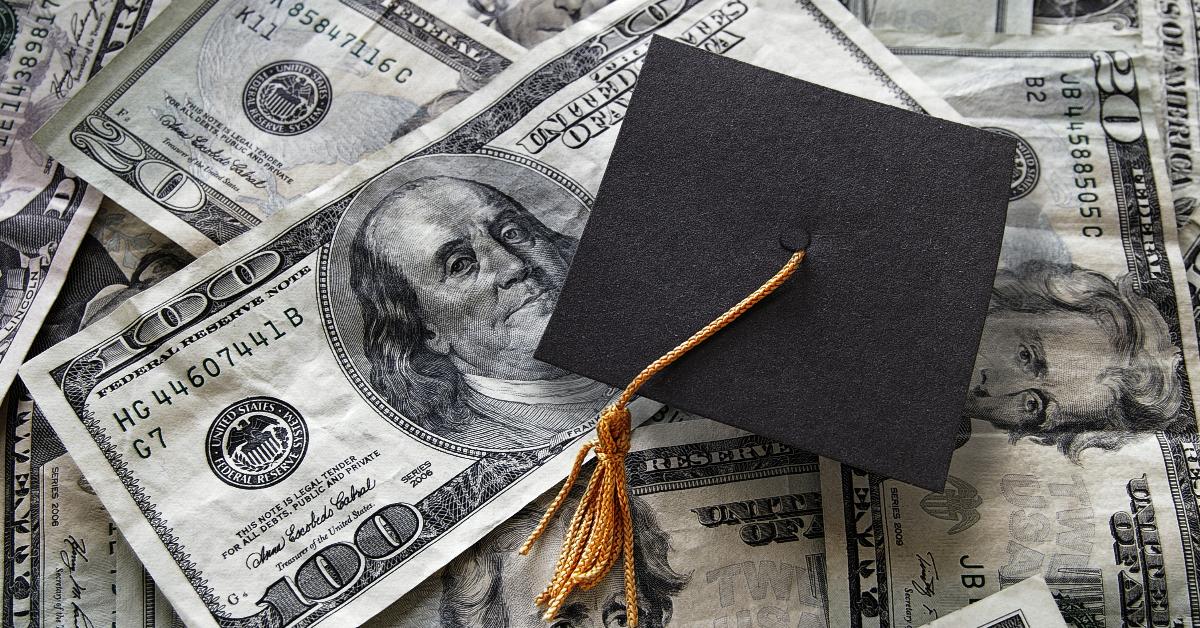
Student Loans: The Continuing Crisis That Is Getting Worse
The leviathan does not rest in pursuing free universities, creeping ahead unchecked by either reason, law, or accounting principles. Why is student assessment of their federal-debt-financed degrees so low? Why are 26 percent of past payments delinquent? More than 50 percent of students agree that they either studied the wrong major or wasted time and money. Less than half have found work in their major field of study.
Public dialogue is lured into discussing forgiveness amounts, rationalizations, plans, and terms, without specifics about monthly costs or other options, thereby distracted from asking the following question: How have graduates—assertively promised increased income, personal satisfaction, and positive impact on society—now become a new dependent class?
The Department of Education gave up collecting student loans. There is an ontological divide. An absence of cost-control measures in discussions of student debt is proof of this divide. The state views individuals as dependent clients in a social-welfare-type scheme, not bound to the repayment terms of a financial contract.
Behind the scenes, the Department of Education plays mix and match with legislated plans, discontinuing some and combining others for maximum charity. The most recent and grandest attempt is the proposed “Savers Plan” (Save Repayment Plan). What are the real costs of payment plans that calculate debt forgiveness after ten years of payments, subject to discretionary income?
No one knows! The Congressional Budget Office cannot use static forecasting. Initially, there were three loan payment plans, expected to be paid in full. Standard repayment and graduated repayment were calculated on the loan balance within a ten-year term. The latter was modified out to twenty-five years and labeled the extended repayment plan.
The federal government’s interjection into debt financing came with the income-contingent repayment plan, passed in the 1993 Student Loan Reform Act signed by then-president Bill Clinton. To make college more affordable, this brought all loans under government authority. In 1993, student loan debt was $180 billion. Average postsecondary public college debt in that year was $3,200. Forty-nine percent of 1992–93 graduates borrowed money to complete college. The average debt for these graduates was less than $10,000. The Student Loan Reform Act set payments at 20 percent of discretionary income. After twenty-five years of eligible payments, any outstanding amounts would be forgiven. This was the first clue that the plans were being designed for partial payments on all student loans.
The slide to free university accelerated in 2007 with income-based repayment. Monthly payments were calculated on what a student could pay, not what was owed, resetting income-contingent repayment plan payments from 20 percent of income to either 10 percent or 15 percent of discretionary income. A debtor’s annual wages less state poverty wages is termed discretionary income.
Successive legislation again changed payoff terms that were using 1.5 poverty wages to calculate a reduced discretionary income. The proposed plan calls for up to 225 percent of poverty wages to be deducted from gross wages. Continually dropping the payment percentage on decreasing calculations of disposable income and adding shorter terms makes it impossible to estimate how much of a loan balance will be written off.
Loan payments are an expected contractual income flow for the United States Treasury. Suspended student loan payments are delayed Treasury payments. Writing off a loan balance after ten years of increasingly lower payments confounds the underlying promise of higher income, the student loan rationale spoken across the education landscape.
The administration’s ultimate goal of forgiving student debt was revealed in the Student Loan Forgiveness Act of 2012, which never came to a vote. Included in this proposal were graduate student loans. A cap of $45,520 was applied to the sum of ten years monthly payments (120 monthly payments of $389 extinguished the loan balance regardless of size). After ten years, any unpaid balances were forgiven. This plan effectively guaranteed that graduate-level debt will never be paid off. This irresponsible idea lives on under the Savers Plan. There are three benefactors of this financial malfeasance.
Students cloaked in baccalaureate hubris label critics as uneducated and irrelevant. Some view their major course of study as a no-fault do-over. To accept the administration’s grift, they claim a lack of knowledge or understanding of basic accounting and loan contract terms, seeking for their private individual errors to be paid for by the larger society.
The educational industrial complex has the leviathan as a de facto business partner. Slow and resistant to adaptation, many schools struggle and need increasing public assistance. One-half of student debt is owed by graduate students. Undergraduate loans are limited to $31,000, while graduate loans are unlimited for the 25 percent of student loan borrowers holding them.
A hidden and perhaps prime mover of current proposals is the Department of Education’s past and present avoidance of responsibility. The administration’s persistence in forgiving student loans hides derelict indifference. Curated facts such as loan figures, including due as well as pending amounts, are presented to the public to sensationalize the topic, promoting a rush to judgment.
Precovid (when student debt was $1.4 trillion) and prior to the Trump-Biden suspension, 32 percent of loans were already in a limbo of default, deferment, or forbearance. Without a bank-audit-level review of FAFSA plans, tuition costs will continue to drift upward; past administrative abuses will be kept hidden. A quick solution to the loan program is meant to cover the incompetence from prior administrations’ failures and the extralegal plans we have today. The dream of free university and graduate school, once hoped for in 2012, comes closer to reality.
Student debt relief is political catnip to Washington. Without any congressional hearings or enabling legislation, the White House has announced the SAVE Repayment Plan to lower monthly loan payments. The discretionary income calculation subtracts 225 percent of the poverty wages from income. No payments are due this year if your salary is less than 225 percent of poverty wages. Loan balances may be forgiven after 120 payment cycles. Undergraduate repayment rates are 5 percent, and past interest is forgiven. This new plan specifically addresses larger portfolios of student debt. Clearly, the intent of the original suggestion of a $50,000 write-off was for graduate degrees.
New Ending
How badly are students financially impaired? Taking a 2023 student debt maximum of $31,900 into the pre-1993 payment scheme of a twenty-year payoff at 5 percent interest requires a payment of $217 monthly, or fifty dollars weekly.
In May 2022, Treasury secretary Janet Yellen said, “Student debt is a substantial burden to many people, especially those who end up with low incomes.” Surely a bachelor’s or associate degree can create additional income to cover the cost of repayment without impoverishing students. As managed, this system cannot continue as a loan program. It will not end well.


